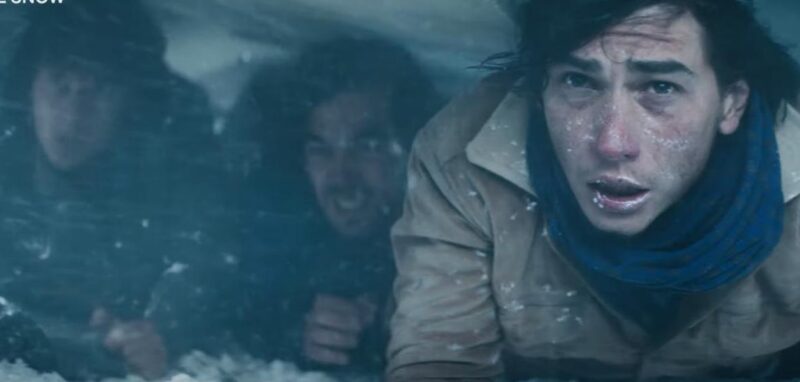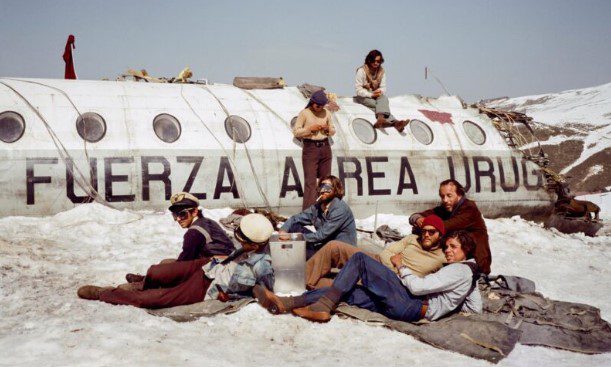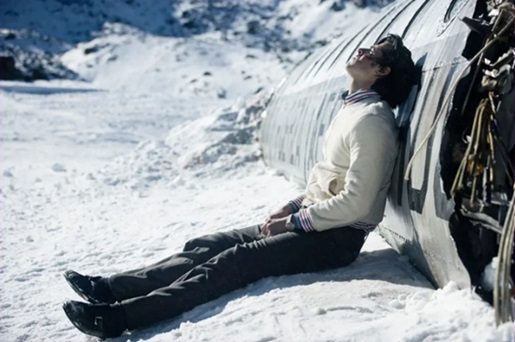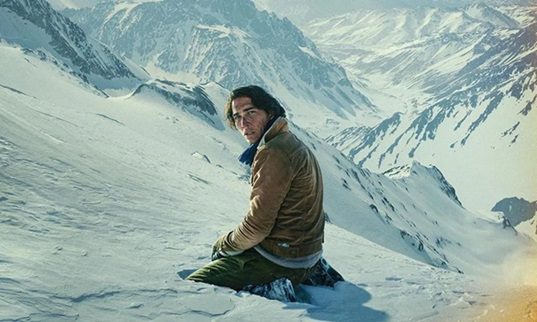Last month I reviewed Survive! (see the review here). That film was an exploitative depiction of the Miracle in the Andes, the harrowing plight of a rugby team that was stranded in the Andes after a plane crash in which 29 out of the 45 passengers survived. The next 72 days saw the players and their friends and family who accompanied them experience natural disasters, sub-zero temperatures, and the consumption of their dead to survive until there were only 16 who made it until rescue.

Survive! and the other previous depiction of this event, Alive, emphasize the inspiring will of human beings to survive against all odds. This year’s Society of the Snow, directed by J.A. Bayona (The Orphanage 2007), does as well, while also touching on another equally important aspect: acknowledgment of those who tragically did not make it. Society of the Snow is the antithesis of Survive! in that it balances the thriller aspect with proper taste and consideration for the ordeal. 1993’s Alive feels like an overcorrection of Survive! in which that film feels very saccharine and overly cinematic in its depiction, focusing less on the elements and mentality in such an environment, and more on the nature of God, and the philosophy of survival itself.
Society of the Snow‘s approach is perhaps the most professional out of all three films. The frigid temperatures in the Andes mountains are acutely felt in the long, and often, gorgeous wide shots of the snowy mountain range, which, while dangerous, is simultaneously beautiful and picturesque, as if the presence of God is more felt than overtly discussed. Either the God of Abraham and Isaac meant to test faith and resolve, or a God that is uncaring, cruel, and wrathful, depending on the viewers’ perspective. This is relevant to discuss as the rugby team were very devout Catholics, and their faith permeates both throughout all three film versions as well as their thoughts and contemplations in life after they were rescued.

An oft-discussed topic when it comes to this event is cannibalism, or anthropophagy, as cannibalism refers to the willing consumption of human flesh, and the latter refers to just the general consumption of human flesh itself. The act is displayed with all the heaviness and trauma that these young men endured as a result of this but is framed in both philosophical and religious terms as a sort of holy communion of survival, in which the surviving members of the crash willingly devote their flesh to the other survivors in the event of their demise to the elements or injury.
The most compelling aspect of the film, as mentioned before, is the inclusion of the perspective of those who perished on the mountain. There is a specific narrative choice that will not be divulged here, as doing so would get into spoilers. However, it is a focal point that places the loss that is experienced front and center, as opposed to the sole focus of the surviving members. I find it interesting that the two previous film depictions were titled, Survive! and Alive. Seemingly selling the notion that the story of the 16 who were rescued is the only story that is worth being told, and that the actual loss is meant to be a footnote. The ones who lived and those who did not get equal representation in this film, and as such both ends of the emotional spectrum are on display through all of the highs and lows that are expected in such a harrowing position.

These emotions are compellingly displayed by its young cast. Of note are Numa Turcatti (Enzo Vogrincic Roldán: A Twelve-Year Night 2018), and Nando Parrado (Agustín Pardella: Bromance 2016). As Numa, Roldán represents the brains of the film. Divulging the complex implications of their situation in tandem with the raw emotion. A man whose perspective compliments the spectacle and danger, exercising brevity in his voiceovers and minimizing excessive explanation. Pardella as Nando showcases a wide range of emotions. Oscillating between grief, mania, calm, and desperation. At times hard to watch, Nando represents the raw reality of the situation and brings the viewer into the intensity, provoking sadness when he fails, and joy when he succeeds.
Society of the Snow is a compelling tale of survival. It is far and away the best film representation of the Miracle in the Andes and manages to balance joy with grief, euphoria with hopelessness, and survival with loss. At this point, it is safe to say that cinema’s journey through the Andes with these young men is over, and we have the perfect portrayal of inspiration and hardship in equal measure.
The film is streaming now on Netflix. You can watch the trailer below.
 PopHorror Let's Get Scared
PopHorror Let's Get Scared




